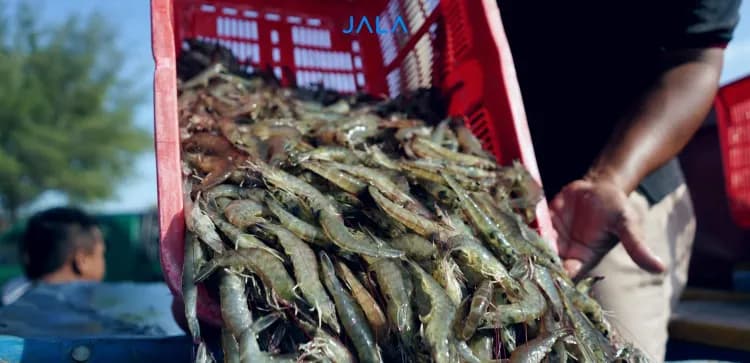
Sustainability in shrimp cultivation always remains a popular topic among industry players. Farms that implement sustainability can ensure that their cultivation can keep running, even across generations. How to implement sustainability in cultivation from technical, systematic, and business aspects? Learn more in this article.
Factors that hinder sustainability
In shrimp cultivation, there are various issues that may hinder sustainable productivity, especially for cultivations that have been running for multiple cycles. These issues may vary from shrimp diseases to changing water quality dynamics, which are commonly caused by an excessive load of organic matter into the pond water environment.
Not only that, the plankton dynamics in the farm are often ignored or overseen by farmers although they pose several risks. While the existence of planktons help to ensure the supply of dissolved oxygen (DO), and they serve as natural feed for shrimp, an excessive population can be dangerous, particularly when the blooming algae phenomenon occurs. This may cause decreased appetite and diseases in shrimp.
Basic principles for improvement
To address these challenges, the improvements to be done can be categorized into external and internal measures. Externally, all shrimp farmers need to collectively understand the marine environment as a source of cultivation water and agree to use shared resources and facilities responsibly. Laboratory checks are also essential for early detection of potential diseases in ponds.
Meanwhile, from the internal side, maximum biosecurity needs to be implemented in every stage of cultivation, including in supply and waste water tanks. Biosecurity helps eliminate or prevent disease-causing organisms such as viruses, bacteria, and parasites. Additionally, water treatment should also be conducted in water tanks to standardize the source water quality, ensuring that it is ideal for shrimp farming in terms of physical, chemical, and microbiological parameters.
Read more: Water Source Quality Standard for Shrimp Cultivation
Paying attention to critical points throughout cultivation
In striving for sustainable farming, farmers must identify critical points throughout the cultivation phases. During the planning phase, considerations such as electrical capacity, pumps, ponds, and human resources should be meticulously noted to ensure smooth farming operations.
During the preparation phase, biosecurity should be implemented while ensuring a suitable plankton amount in the pond water. In the stocking phase, make sure that shrimp fry are of uniform size. Throughout cultivation, conduct regular monitoring and early disease detection to take appropriate actions immediately.
Renew and get the latest cultivation insights with JALA
The material shared above is part of a webinar held by JALA, SHRIMPS TALK. The webinar was held on 25 June 2024 with the theme of "Sustainable Cultivation from an Environmental and Business Aspect”. The material was presented by Ir. Hardi Pitoyo, a shrimp farm practitioner from Shrimp Club Indonesia.
In addition to the presentation by Ir. Hardi Pitoyo, SHRIMPS TALK 16 also featured another interesting presentation on shrimp cultivation environmental regulations shared by the second speaker. Stay tuned for more discussions on JALA's blog!





